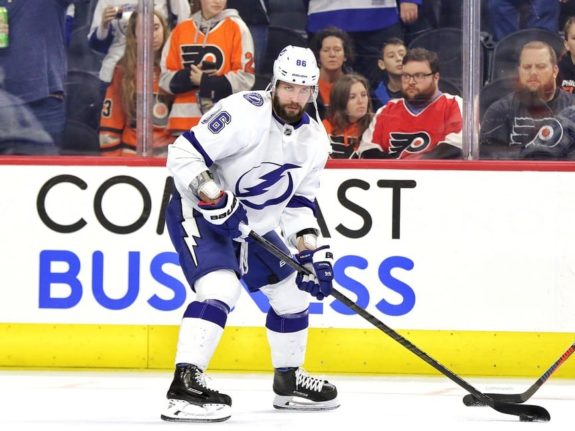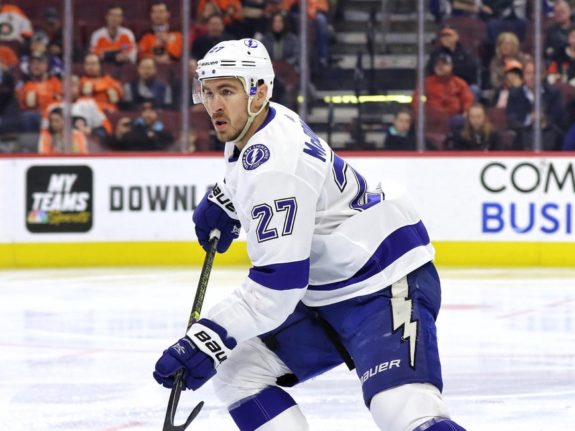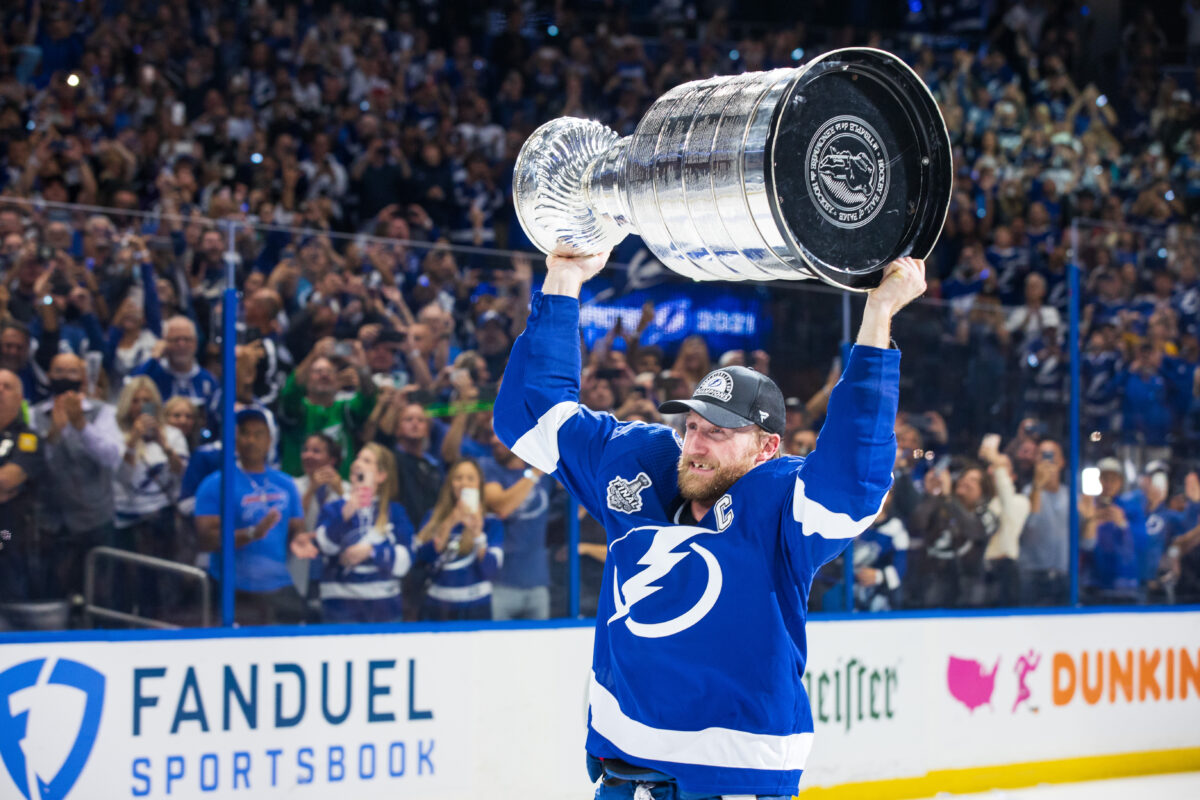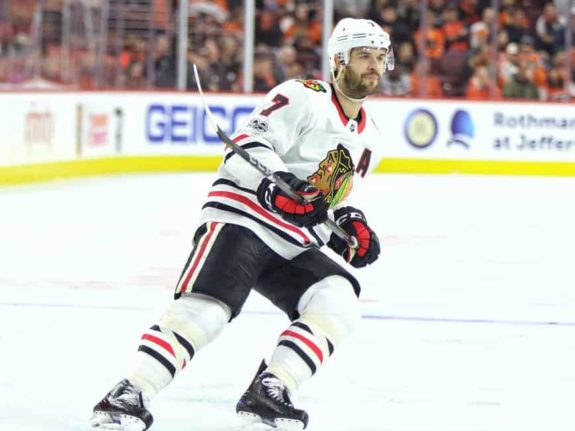When it comes to discussing what a player is worth in the NHL, there is no one definition of what a ‘bad’ contract is, since that can vary wildly from team to team depending on what their expectations are for the near future. If a team is up against the cap and competing for a Stanley Cup, for example, a “bad” contract may simply be a player who is being paid a relatively small amount above their current production, or for a bit longer than their production will likely stay elite.
This is largely where the Tampa Bay Lightning find themselves heading into the 2021-22 season. While they have a number of expensive contracts, most of them can be easily justified, as they are paying a premium to retain some of the top talent in the league.

The reason why I wanted to specify this before discussing the Lightning’s worst contracts for the 2021-22 season is to make it clear that I don’t believe that the franchise currently has a bad contract on the books. The three players listed below all have their place with the team right now, but on a franchise that is desperate for every cap dollar, you can look at their deals and see where some money could be saved.
3) Ryan McDonagh – $6.750 Million Until 2025-26
There’s a reason why the Lightning traded a premium of picks and prospects to acquire Ryan McDonagh back at the 2018 Trade Deadline. He is an elite top-four defenseman who made the team better in the short term, and when he was signed to a seven-year, $6.750 million contract that same offseason, he became a key part of the team’s core for the future.
As of the 2021 Playoffs, no one will argue that McDonagh isn’t worth his current cap hit, as his play on the ice has gone a long way to helping the franchise win back-to-back Stanley Cups. The concern about his contract, however, is the fact that it extends all the way out until the 2025-26 season, where he will be 36 years old.

Now, there are plenty of examples of defensemen who continue to be productive into their late thirties, and I’m not saying that McDonagh can’t be one of those players. It’s just that at his cap hit, the length of that contract is a little bit risky, as age can cause even an elite player’s production to drop off rapidly.
2) Steven Stamkos – $8.5 Million Until 2023-24
It will be impossible to separate Steven Stamkos’ career from the injuries that have consistently plagued him. When he is healthy and playing up to his full potential, Stamkos is still one of the elite shooters in the NHL, which he demonstrated in the 2020-21 season by posting 17 goals in just 38 games.
You may also like:
- Lightning’s Brayden Point’s Elite Shooting Percentage Is Sustainable
- 4 Things Patrick Roy Can Learn From Jon Cooper & Mike Sullivan
- Lightning Should Bring Back Tyler Johnson
- Revisiting the Tampa Bay Lightning’s 2019 Free Agency Class
- Lightning’s Busy Offseason Bolsters Organizational Depth
The problem is, once again, this season was cut short by injury. If he had stayed healthy, he would have easily scored 20 goals scored and could have threatened to reach 30 despite the condensed schedule. Instead, Stamkos missed the back half of the regular season but was able to return for the playoffs and play the full 23 games.

Due to the amount of playing time he has missed in recent years, it’s impossible to look at the remainder of Stamkos’ $8.5 million contract and feel confident that he will actually play the majority of it. Now, this doesn’t mean that he won’t continue to be a face of the franchise and a key part of the team moving forward. It’s just that for his cap hit, there are some concerns about his durability, especially with a full regular season taking place in 2021-22.
1) Brent Seabrook – $6.875 Million Until 2023-24
To put it simply, Tampa Bay is doing it again. After controversially using Long-Term Injury Reserve (LTIR) to be legally $18 million over the cap, the franchise once again appears to be utilizing this strategy again, just to a slightly less egregious degree.
When the Lightning traded embattle winger Tyler Johnson to the Chicago Blackhawks, they returned former star defenseman Brent Seabrook in the deal. He wasn’t included to play a game with the franchise, however, as his career has been cut short due to injuries and he will remain on LTIR for the remainder of his time in the league.
So, while Seabrook’s contract would far and away be the worst for the Lightning if he were playing this season since he is on LTIR, it is now a net positive for the team as it will allow them to skirt around the cap once again. While I believe that this is a savvy use of the current rulebook by the Lightning, like every other fan of the franchise, I am exhausted by the constant “Cap Circumvention” complaints.

Knowing that Tampa Bay will be once again utilizing this tactic for the 2021-22 season makes sense, but there was also a part of me that was hoping to go a full season without having to hear the words “Cap Circumvention” again.
Lightning Lack a Bad Contract
Perhaps the most important takeaway from this list is that the Lightning don’t have a bad contract heading into the 2021-22 season. Through a series of smart signing and tough cap-dump decisions, the franchise has managed to pair down its roster to the core elements that make it truly elite.
This left the team in a great position to be a Stanley Cup contender once again, despite the heavy loss of talent throughout the offseason. Given the flat cap, that was an incredibly hard task to do, and while it may have cost a lot of future assets, it has extended the competitive window for Tampa Bay once again.